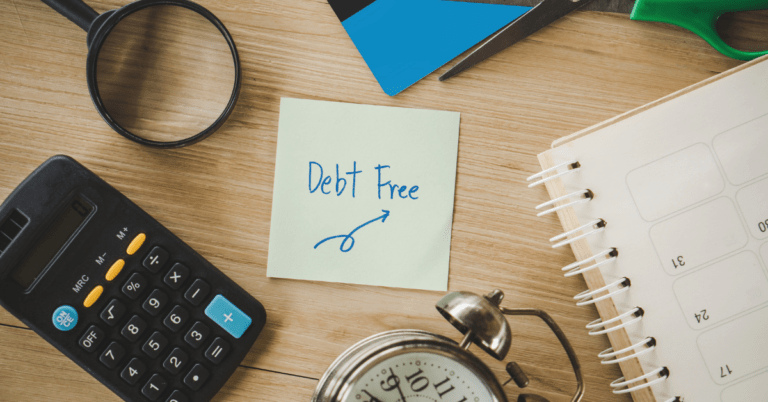How to Pay off Debt Using the Debt Avalanche Method
Many people who are unable to make progress in debt payment don’t have a proper strategy. For instance, only paying the minimum can increase your time in debt and cause you to pay more. If you need an effective way of paying off debt, it’s time to try the debt avalanche method.
A debt-free lifestyle means being able to cover all your expenses, save more, and not live paycheck-to-paycheck. The avalanche approach to debt gives you a chance to pay less interest on your debts.
Want to know if the technique is right for you? Find out how it works.
What is the Debt Avalanche Method?
The debt avalanche method is all about paying off debt with the highest interest first. You’re also required to make minimum payments on your other debts.
After eliminating the first debt, you only have to proceed to the one with the next highest interest rates. You continue kicking out the debts in that order until there’s none to weigh you down.
How the Debt Avalanche Method Works
The following are easy steps to pay off loans and credit cards using the debt avalanche:
Step 1: List your debts.
The first step is to list your debts in order of their interest rates. Start with whichever has the highest interest rate and end with the lowest-interest one.
Include their balances and minimum monthly payments. Getting organized this way ensures you leave out none of them.
Step 2: Make minimum payments.
It’s good to pay the monthly minimums on your debts. That’s how you avoid fees, penalties, and ruining your credit score.
Step 3: Pay extra money on the highest interest rate.
All your extra money should go toward the debt with the highest interest rate. Deciding on how much of your income to dedicate to debt payment goes a long way.
Step 4: Proceed to the next-highest rate.
Once you get rid of the highest-interest debt, its minimum payment goes away. This means that you’ll have more extra cash in the following month.
So, put the money you were paying on that first debt toward the next debt in your list. This means that the second debt receives its minimum payment plus the amount from the first debt.
Step 5: Repeat the process.
Keep doing it over and you could be debt-free soon.
Debt Avalanche Example
Let’s say you have an extra $350, on top of money for minimum payments, to put toward debt payoff each month. And your debts are as follows:
- Credit card 1: $4,000 balance, 18 percent interest rate, and $120 minimum payment
- Credit card 2: $1,000 balance, 15 percent interest rate, and $30 minimum payment
- Personal loan: $1,300 balance, 9 percent interest rate, and $25 minimum payment
- Student debt: $9,000 balance, 6 percent interest rate, and $130 minimum payment
- Auto loan: $15,000 balance, 5 percent interest rate, and $275 minimum payment
So, your payments for the first month (and the next months before the first debt is paid off) appear as follows:
- Credit card 1: $470 ($120 minimum payment plus the extra $350)
- Credit card 2: $30
- Personal loan: $25
- Student debt: $130
- Auto loan: $275
In the month following the payoff of Credit card 1, your payments will be like this:
- Credit card 2: $500 ($30 minimum payment plus $470 from the first debt)
- Personal loan: $25
- Student debt: $130
- Auto loan: $275
Once Credit card 2 is gone, you can then apply $525 ($25 minimum payment plus $500 from the second debt) to your personal loan. Any extra after paying off one debt should go to the next debt. And all you have to do is keep repeating the steps until you kick out the last debt.
The Advantages of Debt Avalanche
The biggest advantage of the debt avalanche method is that it reduces the interest costs of your debts. You only need to follow the steps as they are and never miss a payment.
Also, you can get out of debt faster if you stick to this debt repayment strategy. And that’s all because there’s lesser interest to pay.
The Disadvantages of Debt Avalanche
The debt avalanche technique requires you to be disciplined. Don’t go back to only paying the minimum and no extra on your highest-interest debt. For any unexpected expenses, think of other solutions before slashing the money dedicated to debt repayment.
Other than that, you shouldn’t be someone that’s easily discouraged. You might find that the debt with the highest interest rate in your list also has the highest balance. So, ensure that it doesn’t bother you if a big debt takes months to go away while you would have paid off a smaller one within a shorter time.
Is the Debt Avalanche Right for You?
As you’ve seen, this method requires some effort to work. Use it if you:
- Need to save more money by paying less interest in the long run.
- Don’t need small wins, like quickly eliminating a number of small debts, to stay motivated.
- Are disciplined enough to keep making the payments on all debts while putting any extra toward the highest-interest debt.
- Like dealing with numbers (interest rates in this case).
- Feel confident that it will work for you.
What to Do Next
The debt avalanche method is a perfect debt payoff strategy for keeping your interest costs low and getting out of debt faster. These benefits are enough to keep you on track in your journey toward being debt-free.
In case you need little achievements to keep going, there’s still another strategy to use. That’s the debt snowball method!
In debt snowball, your focus is on paying off the smallest balances first. The largest debt is the last one to be paid off.
The concept is much easier to understand and apply. You won’t have to deal with interest rates.
But you need to keep in mind that the largest loans can have the highest rates. And this factor may make paying off a little bit challenging.
Regardless of the technique that you decide to go with, make efforts to stick to it by paying the extras as required. If you budget your money, you can free up more of it to pay off your loans and credit cards.
Put it as much effort as possible and you’ll soon be free to pursue your other financial goals.







